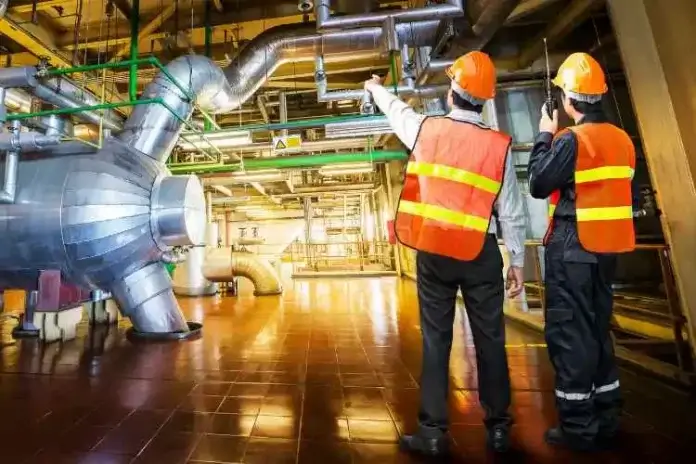
In the steel industry, pollution, carbon dioxide emission reduction, and energy consumption create a huge gap between energy efficiency and environmental management. Keeping in mind the negative impact of energy consumption, emissions, and pollution, adopting sustainable habits is the need of the hour. Green initiatives will foster the decarbonisation of the steel industry and will help to curb the negative impacts of steelmaking on the planet.
To keep up with India’s commitment to the Paris Agreement, the Ministry of Steel strives to opt for green initiatives in order to undergo decarbonisation of the steel industry. Speaking of green initiatives, recycling steel is good environmentally as well as economically. MS scrap rate today in Mandi Gobindgarh is Rs.32,500/MT. Now that you know how economically beneficial steel is, let’s explore how the Ministry of Steel is at the forefront of sustainable practices in the steel industry.
Key Initiatives
Let’s have a look at some of the commendable initiatives led by the Ministry of Steel:
1. Green Steel: Are you wondering what green steel is? Well, it is one of the latest buzzwords in the steel industry.
Green steel is steel production practices and processes which are based on prioritising environmental sustainability. Reducing the industry’s carbon footprint is the main goal of the green steelmaking process. When steel is produced traditionally, (with the blast furnace route to be specific) it generates carbon emissions in large volumes. It is because, in this process, coking coal is used as a reductant.
To fulfil Glasgow’s commitments, the nation strives to reduce emissions to net zero by 2070. To actively make this happen, policy intervention is need of the hour. Currently, the ministry is devising a strategy to come up with a realistic action plan and working on solutions that span from carbon minimisation to carbon avoidance.
2. Production Roadmap: Steel production’s green pathways are categorised into 5 pillars:
1.Renewable efficiency usage
2.Energy efficiency
3.Material efficiency through scrap and pellets
4.Green hydrogen
5.CCUS (It stands for Carbon Capture, Utilization and Storage).
The ministry looks forward to setting up term-based decarbonisation targets- short-term, medium-term and long-term while focusing on incremental reduction when it comes to emission intensity. To ramp up the transition process, it is working on the following key enablers:
· Regulatory mechanism
· Policy framework
· Technological innovation
· Global collaborations
· Financial mechanisms
· Research and development
3.Stakeholders Engagement: To come up with an actionable plan, the ministry is engaging with the stakeholders from the ministries and departments such as:
· Ministry of Power (MoP)
· Ministry of Environment, Forest, and Climate Change (MoEFCC)
· Bureau of Energy Efficiency (BEE)
· Ministry of New & Renewable Energy (MNRE)
· Ministry of Road Transport and Highways (MoRTH)
· NITI Aayog etc.
Energy Efficiency Initiatives
To enhance the steel sector’s energy efficiency, the government is working on the initiatives mentioned below:
1.NAPCC: Launched in 2008, the National Action Plan on Climate Change (NAPCC) outlines 8 National Missions, the National Mission for Enhanced Energy Efficiency (NMEEE) is one such mission that caters to the steel industry. Under this mission Perform, Achieve, and Trade (PAT) is the flagship scheme of the Bureau of Energy Efficiency (BEE).
Being a market-oriented mechanism, PAT enables trading with energy savings certifications with effect from April 2012.
Notable Achievements
Here are the details:
· PAT Cycle-I: The total savings of 2.10 million TOE (ton of oil equivalent) was achieved by the iron and steel sector by the designated consumers.
· PAT Cycle-II: The total savings of 2.913 million TOE (ton of oil equivalent) was achieved by the iron and steel sector by the designated consumers.
During both cycles, collectively 5.013 million TOE was saved. This, in turn, resulted in
18.64 MT CO2 emission reduction.
2.Using Green Hydrogen: Drafted by MNRE, the National Green Hydrogen Mission’s key stakeholder is the iron and steel sector. Being an alternative reductant in making steel, green hydrogen can play an irreplaceable role in the decarbonisation of the Indian steel industry.
You would be surprised to know that In India, approximately 68% of steel is made via blast furnace route. In this process, coking coal is used as the primary reductant while natural gas or pulverised coal injection (PCI) is used as auxiliary reductant.
Work is in progress for replacing green hydrogen with PCI in the BF route.
Parting Thoughts
It goes without saying that decarbonising steel is not an easy task, and it is time-taking as well. They say a journey of a thousand miles starts with a step. Now that the necessary steps have been taken by the government, the change will happen slowly but steadily. With the government’s intervention, the steelmakers will be nudged to first adapt and then adopt sustainable steel-making practices. At their level, steelmakers follow environmentally friendly practices such as scrap recycling.
It is evident from both the PAT cycle results that the government efforts are worth applauding. When policy level changes happen, it is bound to yield positive results.











